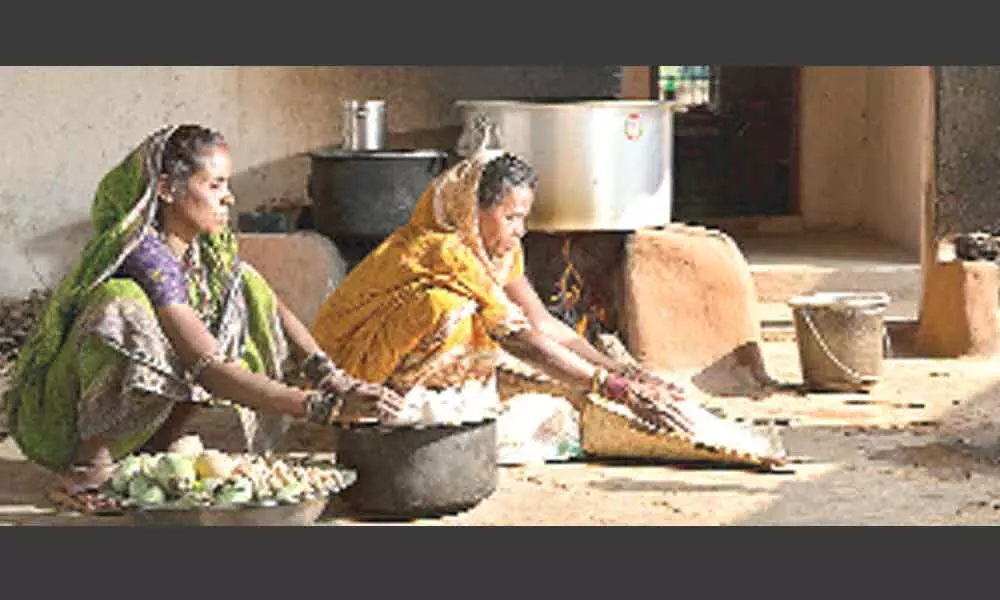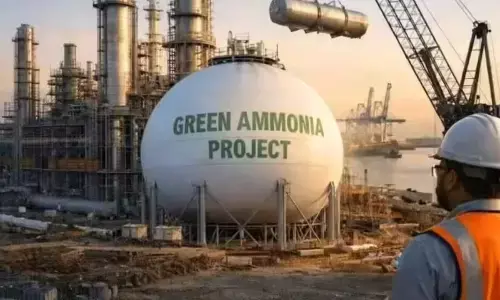Despite bumper harvest, food insecurity still daunting India

Agriculture is expected to grow at 3.9% this year, but hunger somehow continues to belie the high growth trajectory that the country strives for
First, the good news! India is heading towards a record in foodgrain production this year. As per the Second Advance Estimates of production of major crops, foodgrain production is expected to be 316.06 million tonnes in 2021-22. This is 5.32 million tonnes higher than what was achieved a year earlier.
This is also in line with what the Economic Survey 2022 had pointed to. Agriculture is expected to grow at 3.9 per cent this year, up from 3.6 per cent in the last fiscal. The robust performance of agriculture, especially during the two years of pandemic when the economy had severely contracted, has shown the emergence of a new star on the economic horizon.
And now, something to worry about. The second report of the Hunger Watch survey, shows 79 per cent of the surveyed households reporting some form of food insecurity, while 25 per cent said they faced severe food insecurity. The survey is conducted by Right to Food Campaign and some other associates and covered 6,697 respondents in 14 States. While a fall in average incomes during the pandemic is certainly an important reason, hunger somehow continues to belie the high growth trajectory that the country strives for.
In any case, we are all aware of India's dismal performance year after year in the Global Hunger Index. In 2021, as India ranked 101 out of 116 countries, it trailed behind Pakistan, Nepal and Bangladesh. Ever since the report was first published in 2006, my observation is that India's ranking continues to be somewhere at the bottom. Strangely, hunger has kept pace with the huge food surpluses the country continues to produce. Denials notwithstanding, the dismal performance in removing hunger is a sad reflection on the failure of political leadership to take the bull by the horn.
Why I am saying this is because at a time when the country had an annual food surplus of 60 million tonnes or so, and that was in the beginning of this century, someone had worked out that if we were to keep one bag of foodgrain over another, and stack it like that, we could actually walk to the moon and come back. Imagine, with so much of food stocks available, hunger not only continued to prevail, but also remained robustly sustainable. Who do you blame? After all, policy makers have to take responsibility for not showing the same urgency as they had demonstrated while bringing in the Special Economic Zone Act, 2005, to give you an example, and the speed at which the government acquired 45,000 hectares of land for an ambitious export-oriented project that eventually failed to meet the expectations.
Meanwhile, the annual surpluses that farmers produce have increased in the past few years, hovering almost between 80 and 90 million tonnes every year, and that too for a number of years now. Thanks to the food surplus, it became possible for the generosity in providing free ration to the poor during the pandemic years, in addition to their usual monthly food entitlements. Imagine, if we didn't have the food surpluses how difficult it would have been to provide food to the poor who were faced with an alarming level of food insecurity following the snapping of the strings of livelihoods once the lockdown began. Probably, in that case, India would have faced the fury of two epidemics – Corona virus as well as that of food shortages.
And yet, instead of ensuring that no one is left hungry and nutritionally undernourished, as brought out by the Hunger Watch survey report and also various other studies, a significant amount of the paddy surplus stocks continue to be exported inviting strong reactions from the World Trade Organisation (WTO) for distorting international trade with exports of subsidised grains.
Coming back to foodgrain production, despite the ongoing discussions on the need to reduce the area under wheat and paddy so as to reduce the food surpluses, wheat and paddy production this year is expected to be bumper. Wheat production is expected to break all records, estimated at 111.32 million tonnes, an increase of 2.73 million tonnes over the previous year. If we take the average production of 103.88 million tonnes of wheat produced between 2016-17 and 2020-21, the increase this year is expected to be 7.44 million tonnes. Rice production too is expected to rise this year, from 124.37 million tonnes in 2020-21 to 127.93 million tonnes in 2021-22.
When it rains, it rains happiness. That is why a bountiful monsoon raises the feel good factor that the economy desperately needs at the beginning of the monsoon season every year. And that reminds of what a former Agriculture Minister, the late Chaturanan Mishra, had once candidly remarked saying something like: "Mr Monsoon is the true Agriculture Minister of India." While not publicly acknowledging it, I am sure every successive Agriculture Minister, who had followed him, would agree. We know that every Agriculture Minister wants to present a good report card, and a higher production is what they want to see during their respective tenures.
For the past three years, since 2019, India has received an above-normal rainfall thereby making it easier for agriculture to achieve record harvests, and thereby providing a strong foundation for the economy to look up. Mercifully, rains had remained normal when the global economy, hit by the pandemic, had seen a serious downturn. A good monsoon season and agriculture emerged as the only saviour.
Since 2003-04, when the total foodgrain production was 212 million tonnes, agriculture since then has taken long strides with foodgrain production in 2021-22 estimated at 316. 06 million tonnes, an increase of 104.06 million tonnes in past 17 years. Not a small achievement by any standards. But then, why is that while production continues to increase, the farmers who make this possible with their hard work and labour, continue to live in misery and somehow survive in acute distress? Why it is that while the nation celebrates a record food production, it goes conspicuously quiet when it comes to guaranteeing a living income for farmers? After all, in real terms, what farmers produce is economic wealth for the country. They are in reality wealth creators. Like other wealth creators the country bows to, farmers too should be at least living comfortably, if not in opulence.
Considering that 70 per cent of the rural households are engaged in agriculture, they surely constitute a significant proportion of the population that sleeps with a hungry stomach. This dichotomy in economic thinking – striving for a higher foodgrain production while keeping farming populations deliberately impoverished – has to end. To believe that higher the foodgrain production, higher will be the farm income is an economic concept that has failed not only in India, but also in the rich developed countries.
(The author is a noted food policy analyst and an expert on issues related to the agriculture sector. He writes on food, agriculture and hunger)

















